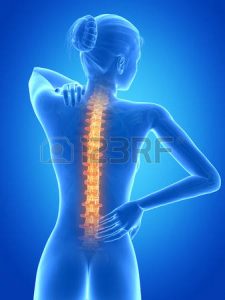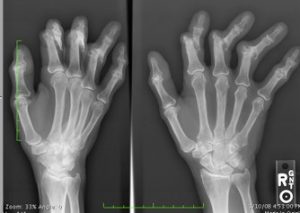Nine Reasons to Lose Weight That Have Nothing to Do with Fitting into Your Skinny Jeans
 We talk a lot about the importance of reaching a goal weight and how to stay motivated. Sometimes, though, it still seems like a laborious task. If you’re carrying extra weight, you probably already know there are a myriad of health-related reasons to slim down. While it may seem impossible, little steps will carry you bit by bit down your weight loss path to your ultimate goal.While keeping your eyes on the big prize, it may help you to realize that even small changes in your weight may improve blood sugar, blood pressure, heart health, reduce cholesterol, and decrease your chances of developing diabetes. We’ve shared many motivational tips, but did you know that when you lose 10% of your bodyweight, you are instantly healthier? There’s no doubt that dropping weight will make you look and feel better, but there are numerous other benefts that you can realize while on your weight loss journey, which have nothing to do with how you look in your skinny jeans. Read more: Strategies for successful maintenance after weight loss.
We talk a lot about the importance of reaching a goal weight and how to stay motivated. Sometimes, though, it still seems like a laborious task. If you’re carrying extra weight, you probably already know there are a myriad of health-related reasons to slim down. While it may seem impossible, little steps will carry you bit by bit down your weight loss path to your ultimate goal.While keeping your eyes on the big prize, it may help you to realize that even small changes in your weight may improve blood sugar, blood pressure, heart health, reduce cholesterol, and decrease your chances of developing diabetes. We’ve shared many motivational tips, but did you know that when you lose 10% of your bodyweight, you are instantly healthier? There’s no doubt that dropping weight will make you look and feel better, but there are numerous other benefts that you can realize while on your weight loss journey, which have nothing to do with how you look in your skinny jeans. Read more: Strategies for successful maintenance after weight loss.
Fewer Asthma and Allergy Symptoms
The link may not be immediately obvious, but new research has found that for some people, being overweight can make their asthma and allergy symptoms worse. Carrying excess weight on your body puts a burden on the adrenal glands, and your adrenal glands help manage asthma and allergies. In addition, being overweight strains your respiratory system and can make allergy symptoms worse.
Arthritis Relief
Not only does losing weight help relieve arthritis pain, it can also help keep you from developing arthritis—the less you weigh, the less stress on the joints. In addition, recent studies have shown that when you have arthritis and you lose weight, your pain is reduced and your joint functionality significantly improves.
Less Foot Pain
You may not really think about it, but excess weight can put a lot of pressure on your feet, even if you don’t have arthritis. In a recent study, people who had lost an average of 90 pounds found that their incidence of foot pain lowered by 83%. This is understandable because your feet support your entire body, and therefore your entire body’s weight. Relief from foot pain is motivation enough for losing weight.
Glowing Skin
There are numerous ways being overweight may affect your skin, which is the body’s largest organ. Both skin elasticity and color can be altered by lack of proper nutrition, and a diet high in carbohydrates and sugar can cause pale skin and skin tags. Darkness around the eyes can also signal poor nutrition, such as iron defciency, diabetes, protein anemia, or stress.
Better Mood
When you are overweight, your entire system will be out of balance, including the hormones that affect your mood. Losing weight may increase your overall sense of well-being and decrease feelings of depression. Many overweight people suffer from extreme depression, and depression may increase a person’s chances of being overweight, setting up a cycle that is hard to break.
Improved Cognition and Memory
A recent study found that older adults who were overweight scored worse on cognitions tests than adults who were at a healthy weight. Past studies have linked excess weight in animals to cognitive decline, but little has been previously understood about the interaction between obesity and the brain. However, new research suggests that being overweight weakens the blood-brain barrier, and this allows substances manufactured by fat to flow to the brain. Researchers also discovered that 12 weeks after weight loss, memory significantly improves.
Sounder Sleep
If you’ve ever suffered from insomnia, you understand the benefits of a good night’s sleep. During sleep, your cells are repaired and your brain processes and remembers the day’s events. In fact, the most common prescription for sleep apnea is weight loss. In studies involving people with diabetes and sleep apnea, those who lost a greater amount of weight had the most significant drop in sleep apnea symptoms. It only takes a weight loss of 5% in obese people to start seeing results.
Reverse Type 2 Diabetes
Almost everyone has either heard or read about the global epidemic of type 2 diabetes and its link to obesity. It may be a surprise for many to learn how effective losing weight can be at reversing the impact of type 2 diabetes. In fact, many people can avoid the disease altogether by achieving and maintaining a healthy weight. Studies have shown that type 2 diabetes patients on a restricted eating plan, such as the doctor-supervised ChiroThin Weight Loss Program, were able to lower their blood sugar and insulin levels to normal within seven days. If you have type 2 diabetes, reversing the condition and avoiding future complications could just be the best benefit of your weight-loss journey.
Economic Savings
Many complain that eating a healthy diet is costly, and sometimes it does seem like fast food, junk food, and convenience food is cheaper. However, in the long run, slimming your waist can plump up your wallet. When you calculate the cost of medical bills, missed days at work, short-term disability, low-productivity, workers’ compensation, and more, there is a real difference between the financial health of obese people and their peers who have healthier weights. There’s nothing wrong with wanting to look good in your clothes, but the harsh reality is that being overweight can take up to 20 years off your life. Reducing your weight by even 5% can have a positive effect on your health, and it is a great beginning for your transformation. If you are ready to start your weight loss journey, call our office at Oblander Chiropractic to find out more about the doctor-supervised ChiroThin Weight Loss Program.
The office phone number is 406-652-3553
 Extreme Makeover features a celebrity trainer helping very overweight individuals reach their weight loss goals. Sometimes, their attitudes aren’t great, but other times, the people on the show are truly amazing, like Sara. Sara is a little person, standing at only 4’5″. She was a nutrition speaker on local television shows at the start of her journey, but ashamed of herself. Not only had she spent her life dealing with her short stature, but she had suffered greatly at the hands of her sister. She turned to eating and by the time she was 37 years old, weighed over 200 pounds.
Extreme Makeover features a celebrity trainer helping very overweight individuals reach their weight loss goals. Sometimes, their attitudes aren’t great, but other times, the people on the show are truly amazing, like Sara. Sara is a little person, standing at only 4’5″. She was a nutrition speaker on local television shows at the start of her journey, but ashamed of herself. Not only had she spent her life dealing with her short stature, but she had suffered greatly at the hands of her sister. She turned to eating and by the time she was 37 years old, weighed over 200 pounds.

 Anyone with a chronic pain condition like fibromyalgia knows it can be difficult to adhere to a complex set of treatment instructions: physical therapy, medications, creams, journals, the list goes on. We get busy or forget and sometimes don’t comply completely with the treatment, but sooner or later the pain creeps back in. It turns out that regular chiropractic visits can actually help fibromyalgia patients adhere to long-term physical-therapy programs, thereby ensuring that patients receive the full benefits of exercise.
Anyone with a chronic pain condition like fibromyalgia knows it can be difficult to adhere to a complex set of treatment instructions: physical therapy, medications, creams, journals, the list goes on. We get busy or forget and sometimes don’t comply completely with the treatment, but sooner or later the pain creeps back in. It turns out that regular chiropractic visits can actually help fibromyalgia patients adhere to long-term physical-therapy programs, thereby ensuring that patients receive the full benefits of exercise.

 Pre-diabetes may contribute to stroke risk but that depends largely on how prediabetes is defined, the authors of a new meta-analysis pointed out in the British Medical Journal. Since definitions of prediabetes vary, it’s difficult to determine the exact degree of risk prediabetes presents.
Pre-diabetes may contribute to stroke risk but that depends largely on how prediabetes is defined, the authors of a new meta-analysis pointed out in the British Medical Journal. Since definitions of prediabetes vary, it’s difficult to determine the exact degree of risk prediabetes presents. Imagine what happens when you injure your neck in an auto injury…
Imagine what happens when you injure your neck in an auto injury… Our sleep cycle is separated into two main components: rapid eye movement (REM) sleep and non-REM sleep (NREM). We cycle between the two all night, with four stages of NREM sleep preceding one stage of REM sleep. NREM sleep is the stage at which our body repairs itself, energy is replenished and our immune system is boosted. A complete cycle of sleep takes between 90 and 110 minutes in total, with approximately a quarter of that time being spent in REM sleep. It is also the stage during which dreaming almost always takes place. Scientists are still trying to discover the extent to which REM sleep affects our health and mental well-being, but they do know that REM sleep is important for the development of creativity and problem solving ability, and is how we learn to adapt to our world.
Our sleep cycle is separated into two main components: rapid eye movement (REM) sleep and non-REM sleep (NREM). We cycle between the two all night, with four stages of NREM sleep preceding one stage of REM sleep. NREM sleep is the stage at which our body repairs itself, energy is replenished and our immune system is boosted. A complete cycle of sleep takes between 90 and 110 minutes in total, with approximately a quarter of that time being spent in REM sleep. It is also the stage during which dreaming almost always takes place. Scientists are still trying to discover the extent to which REM sleep affects our health and mental well-being, but they do know that REM sleep is important for the development of creativity and problem solving ability, and is how we learn to adapt to our world. It seems as if you can’t check the news without finding at least one story of a life being lost to drugs. What is perhaps most concerning is that, all too often, the person who succumbed tragically for drug-related reasons is fairly young. And, a study released in the journal Addiction found that opioids — or narcotic painkillers like Vicadin, oxycodone, codeine, and morphine — are largely to blame.
It seems as if you can’t check the news without finding at least one story of a life being lost to drugs. What is perhaps most concerning is that, all too often, the person who succumbed tragically for drug-related reasons is fairly young. And, a study released in the journal Addiction found that opioids — or narcotic painkillers like Vicadin, oxycodone, codeine, and morphine — are largely to blame. We’ve all heard that calcium is crucial for preventing bone and joint problems, but new research suggests there may be another mineral we need to be mindful of: zinc. In particular, a study suggests that levels of zinc within the cartilage cells may help to explain why tissue destruction occurs in patients with osteoarthritis.
We’ve all heard that calcium is crucial for preventing bone and joint problems, but new research suggests there may be another mineral we need to be mindful of: zinc. In particular, a study suggests that levels of zinc within the cartilage cells may help to explain why tissue destruction occurs in patients with osteoarthritis.